I. Introduction to bristles
In our series of articles on deburring, we continue to bring you new content. Today we discuss the topic of brushes.
Possibly, when we talk about brushes, the first things that come to mind are those that we use daily, such as toothbrushes or shoe brushes.
However, brushes also find a significant number of applications in our industrial areas.

Certainly, each product has its economic value, similar to the industrial brushes we are discussing. They typically serve functions such as grinding, dust prevention, polishing and cleaning.
Now, let's delve deeper into each of these apps and functions.
1. Application of bristles – rectification
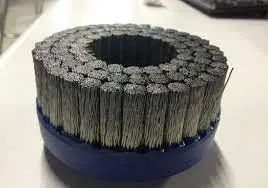
Grinding brushes are rarely used in general industrial grinding; Typically, grinding wheel tools are employed directly. These are outside the scope of industrial brushes.
However, for the sueding process in the textile industry, brushes with abrasive silicon carbide filaments are required.
The grain size (density) of the silicon carbide in the abrasive filaments must be adjusted according to the resistance of the fabric to be sanded and the required sanding effect.
2. Application with bristles – Dust prevention
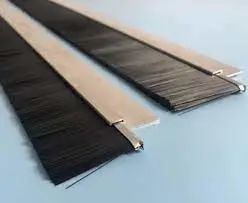
Dust-proof brushes are mainly installed in industrial equipment, assembly lines, and door and window entrances and exits to prevent dust from infiltrating through these gaps and contaminating equipment and products.
As such, the brush bristles must have high elasticity, better lubrication on the surface, and under special circumstances, they must have flame retardant properties, wear resistance and anti-static functions.
For example, escalator safety brushes fall into the category of dustproof brushes, but with higher requirements.
3. Application with bristles – Polishing
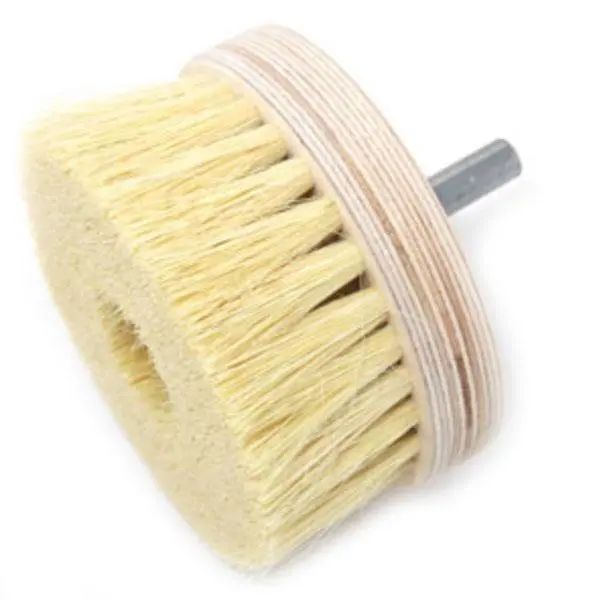
Polishing brushes are mainly used for deburring, precision milling and surface polishing of the workpiece. It is necessary to select brush types and properties according to different requirements.
For harder steel sheet surfaces that require electroplating and polishing, the most suitable brush would be a bronze brush. For general metallic materials that require surface rust removal and deburring, a brush with a higher hardness steel wire would be sufficient.
4. Bristle applications – Cleaning
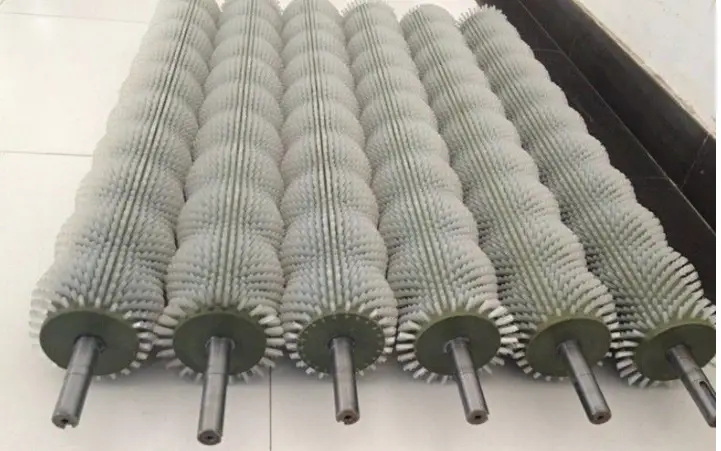
Cleaning brushes are commonly used industrial roller brushes, typically employed in the deep processing of agricultural by-products, such as cleaning fruits and vegetables, as well as general cleaning and dust removal in industry.
The brush bristles require excellent abrasion resistance, high elasticity, and resistance to corrosion and aging, ensuring that they will not deform easily under long hours of work.
If bristle performance is substandard, placing an object in a stationary position for an extended period of time may cause grooves to form in the brush roll, compromising its functionality.
In severe cases, this can even result in the entire brush roll being discarded completely.

Regarding the application scope of brush deburring, as professionals in the machining industry, you may be more concerned about the deburring area. So, let's continue discussing this topic.
II. Brush material
The most used materials on the market are nylon mixed with abrasive or metallic threads. The nylon and abrasive mixture mainly includes aluminum oxide, silicon carbide and diamond wire.
1. Bristle material – Origin
Nylon abrasive brushes, an industrial tool originating in Europe in the 1990s and widely used in Japan, operate on a unique processing principle.
During machining, numerous abrasive nylon filaments function as an equivalent number of flexible files, bending freely to adapt naturally to the contour of the part, reaching grooves and holes normally inaccessible to conventional tools.
Difficult-to-remove burrs are eliminated, sharp edges are smoothed into shiny arcs, and edges are dull, achieving the ideal effect of edge blunting and surface polishing. Abrasive nylon filaments consist of nylon infused with abrasives such as silicon carbide and aluminum oxide.
Mainly, nylon 612 is used because of its excellent kink recovery ability, low moisture absorption, light weight and high hardness. Abrasives, mainly silicon carbide and aluminum oxide, are cubic-shaped particles ranging from 46 to 600 mesh size.
2. Angle Grinder Brush – Features
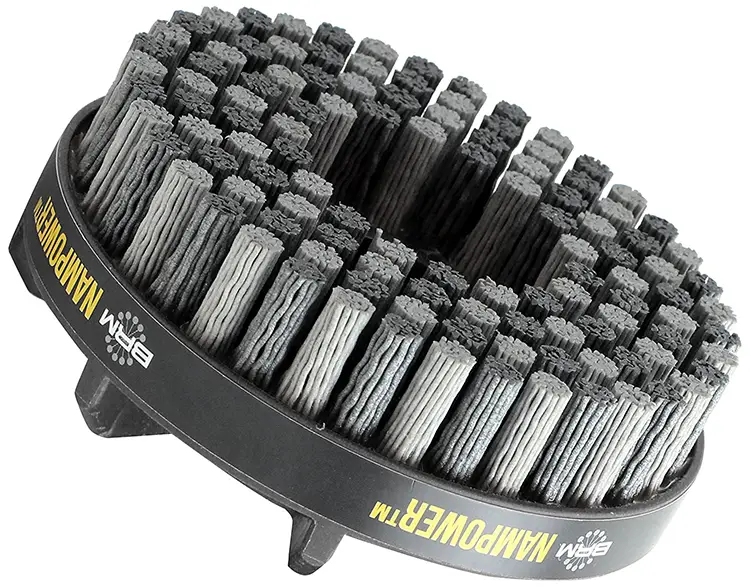
1. Excellent chemical resistance
It presents high resistance to acids and alkalis and organic solvents, without compromising the original surface finish. The bristles absorb minimal moisture, making them suitable for both dry and humid conditions.
2. Durability
The brush offers exceptional durability, with robust bristles that guarantee a long service life.
3. High bristle strength
The bristles have high resistance and rigidity, allowing comprehensive and uniform grinding on various surfaces, including flat and irregular ones.
III. Introduction to Ceramic Bristle Brushes
Some friends sent us messages asking about the features of our ceramic bristle brushes.
Today we will explain everything at once. The surface of the brushes we use is made with abrasive ceramic fibers instead of abrasive particles. A single bristle contains 1,000 cutting edges, demonstrating excellent cutting performance.
Ceramic fiber brushes have three main features: “superior grinding power”, “consistent cutting performance” and “no deformation”. They are capable of deburring and polishing in machine processing.
1. Superior grinding power
Ceramic fiber itself is an abrasive, with a fiber content of more than 80%. Each individual fiber end forms thousands of cutting edges, resulting in superior grinding power.
Compared with nylon grinding brushes, the brush surface grinding ability is improved by 20 to 30 times and can remove burrs continuously.
2. Consistent performance
The ceramic fiber structure always exposes new cutting edges, so the grinding brush can maintain consistent cutting performance all the way to the end, ideal for deburring and polishing in machining.
3. No deformation
The straightening brush maintains its linear shape and does not spread like a toothbrush, even after repeated use. It is suitable for deburring and polishing in large-scale production lines.
In conclusion, let's summarize the advantages and disadvantages of the brush.
Benefits :
1. No additional equipment required for application.
Simply attach the brush to the tool handle to use.
2. Wide range of suitability.
By adjusting the size and structure of the brush, it can be used for most processing surfaces and hole diameters.
3. Short cycle time for adjustments and changes.
There is no need for a long period of equipment debugging.
Disadvantages:
1. Unable to remove burrs in special places.
For example: narrow passages or retaining ring grooves.
2. Significant impact on cycle time.
Requires longer processing time as the tool path needs to cover the burr area.
3. Consumables, thus increasing costs.
The brush wears out quickly and needs to be replaced after the wear compensation reaches a certain length.
4. Ceramic brush data comparison
I have compiled some data here to provide a clearer understanding of the advantages and features of ceramic brushes.
The data listed represents a performance comparison between ceramic and nylon brushes.
| structure | Ceramic Brush 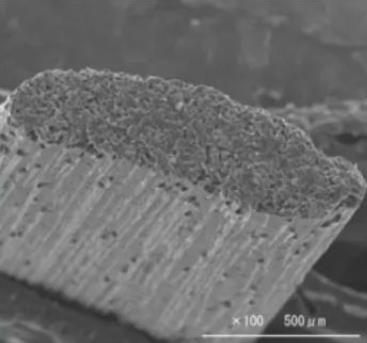
|
nylon brush 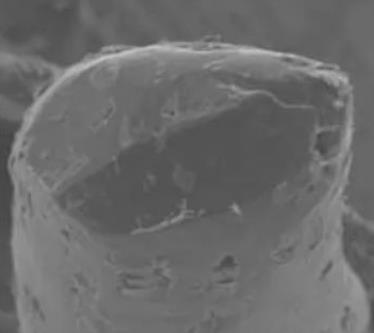
|
| Robustness | An alumina fiber is made up of 1,000 strands of fiber filaments (with the red and white fiber filaments having diameters of 10μm and 15μm, respectively). | The abrasive grains are impregnated in nylon. The nylon base provides flexibility, but its rigidity is moderate. |
| Consistency | Therefore, this structure ensures that the fibers remain strong and undistorted during the deburring process, maintaining consistent grinding. | During the deburring process, deformation and softening may occur. |
| Good grinding performance | Aluminum oxide fibers represent approximately 75% of the total weight.
Throughout the grinding process, these fibers consistently maintain excellent self-sharpening characteristics, continually offering superior grinding performance. |
Grinding particles represent only 30% of the total weight; its self-sharpening ability is poor, so the grinding efficiency is quite low. |
| High stability | Thanks to the uniform composition of numerous alumina fibers, it can provide stable and exceptional grinding performance. | Due to the significant variation in grinding particle diameter, it is challenging to achieve ideal results. |
| Reduced obstruction | The secret lies in the self-fracturing and continuous sharpening of the aluminum oxide fibers, ensuring that they do not clog during processing. | Grinding can easily cause clogging. |
| Suitable for dry and wet grinding | Thanks to its high heat resistance (around 150°C), it still works stably during dry grinding.
Due to its excellent water resistance, it does not reduce the stiffness of the luxurious material during wet grinding, providing stable grinding performance. |
Due to its low heat resistance (approximately 90°C), the heat generated during dry grinding causes the abrasives to soften and the nylon to melt.
Due to their low water resistance, abrasives soften during grinding, leading to a decline in grinding performance. |
This essentially covers some insights and experiences about wire brushes that I would like to share with you all today. It may not be comprehensive, but I hope you find it enjoyable.

























































